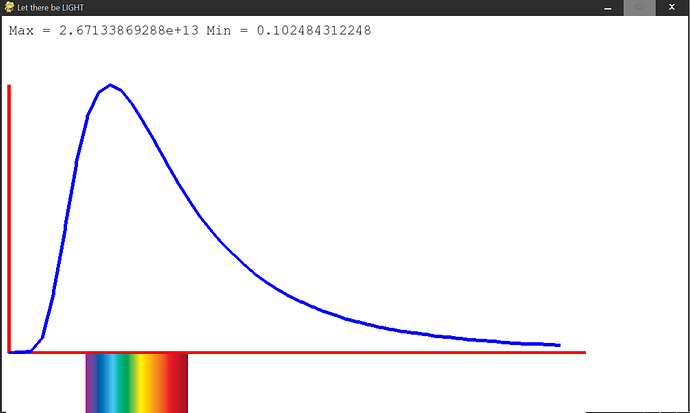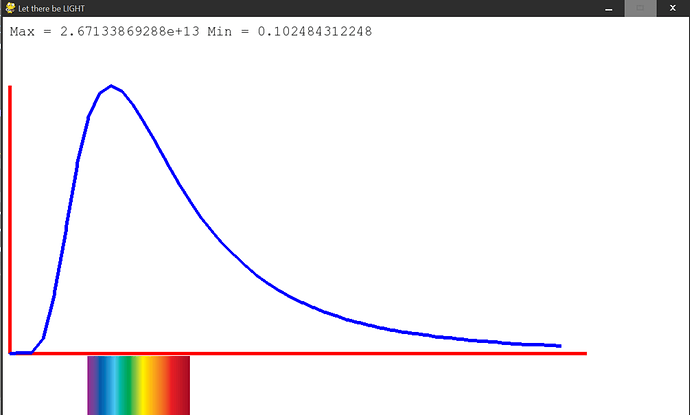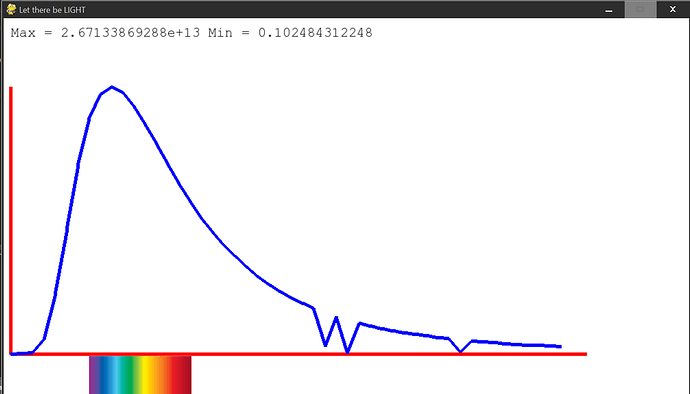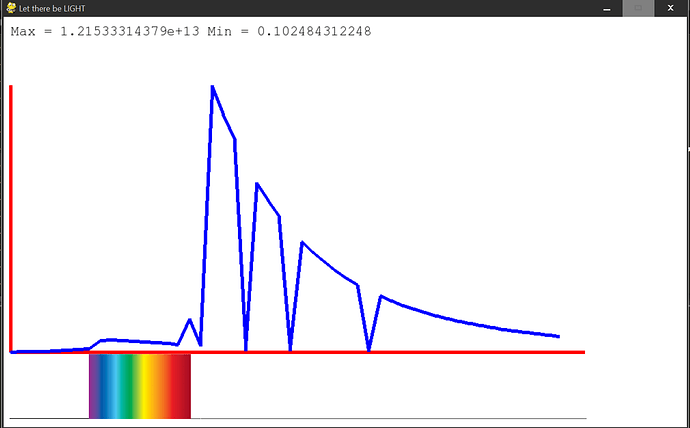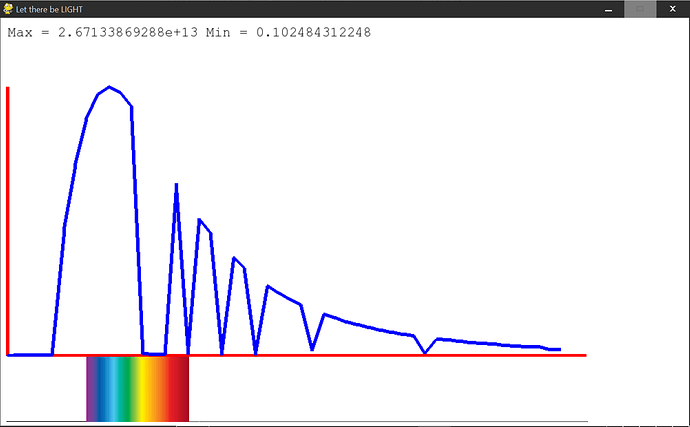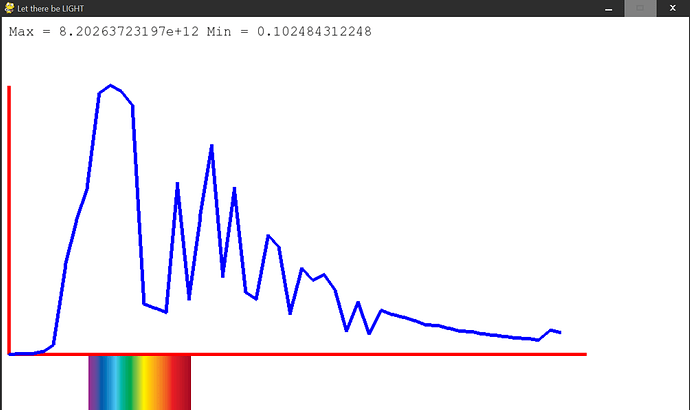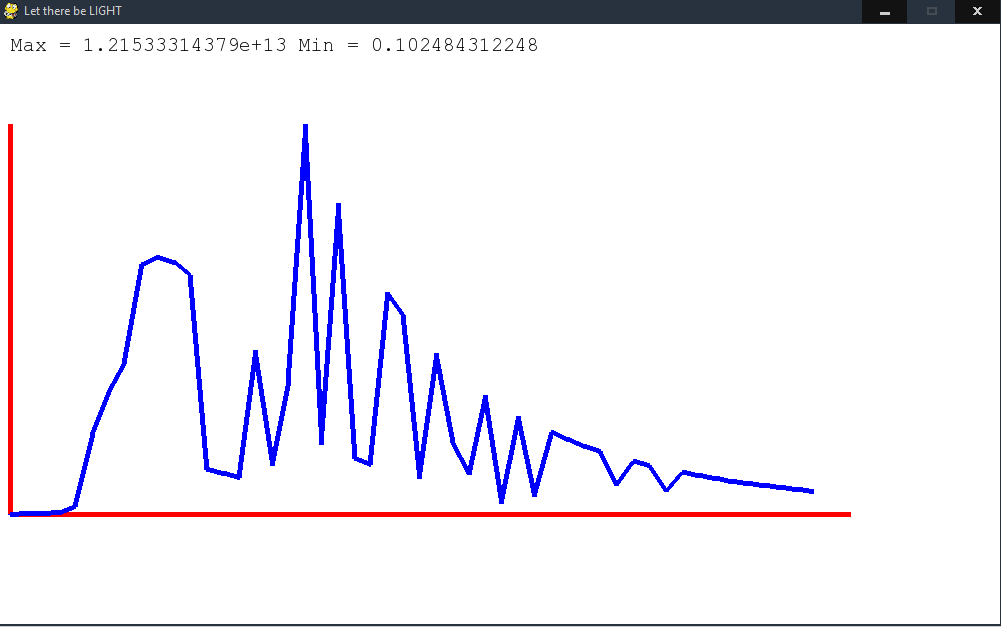Ok so I’ve played around with this a bit. There’s quite a lot of fudging going on. These images in order are
- Spectrum from space.
- What part of that spectrum gets through a planet with very thick atmosphere made only of nitrogen
- Heavy Carbon Dioxide only atmosphere
- Heavy oxygen only atmosphere
- Heavy water only atmosphere
- Atmosphere on an Earthlike planet
As you can see the nitrogen calculation is pointless (because the values are so small in that frequency anyway (this is for a star much like our sun but black body radiation gives similar output for brighter stars)). The carbon dioxide calculation is pointless too as it doesn’t really affect much in the important part of the spectrum (but is very important for climate change because the earth radiates in the deep infra red. So walk don’t drive! lol) The spectra produced are pretty close.
The procedural chloroplasts generated would be a bit wrong for the earth (they would probably be yellow not green because that is the lowest part of the spectrum). Not sure what to do about that. How much should we fudge so the earth is correct? (You can see a diagram of what it should look like in the post above).
